-
Why we love it
This route passes through the most spectacular landscapes of Tuscany: the soft hills of the Orcia Valley dotted with cypress trees, the natural thermal baths of Bagno Vignoni, of Roman origin, romantic stone villages surrounded by nature. - Travelling time: 7,15 h
- Difficulty: Medium
- Length: 33 km
- Total Elevation Gain: 908 m
- Way to travel: on foot, nordic walking
- Cost: 0 €
- Our Advice: The best times to walk this part of Via Francigena are spring, autumn and winter. Avoid the summer because the heat can be too strong, due to the lack of shadows along the way.
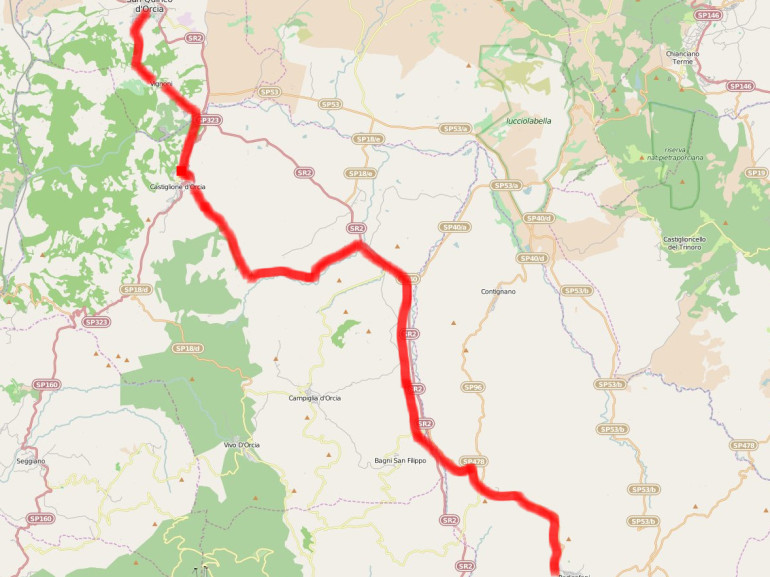
Our walking tour starts from the heart of the Val d'Orcia, that with its gentle and carefully cultivated hills is one of the most photographed and loved landscape in the world.
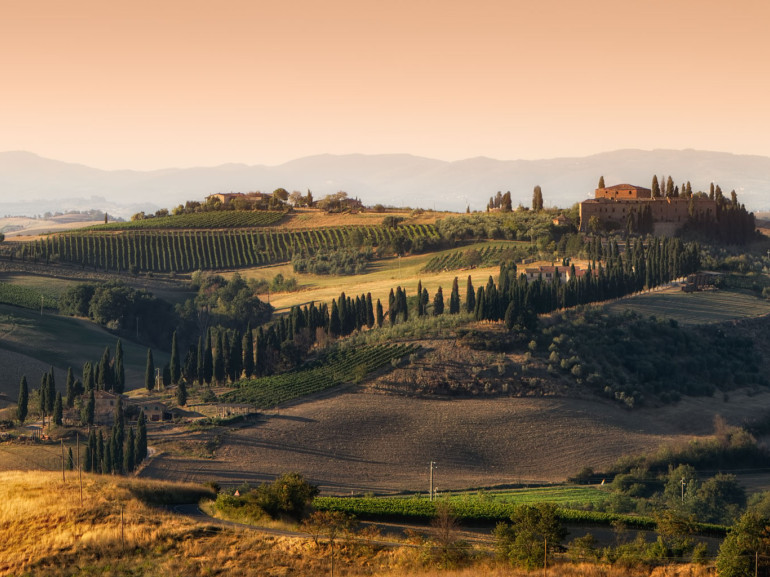
San Quirico d'Orcia, the postcard of Tuscany in the World
We start from the picturesque medieval village of San Quirico d'Orcia, located on top of a small hill from which we can enjoy a breathtaking view of the Val d'Orcia valley.
From here you can enjoy a beautiful view with small picturesque villages and groups of cypress trees. You have the feeling of being immersed in a Renaissance painting, or in a postcard of Tuscany.
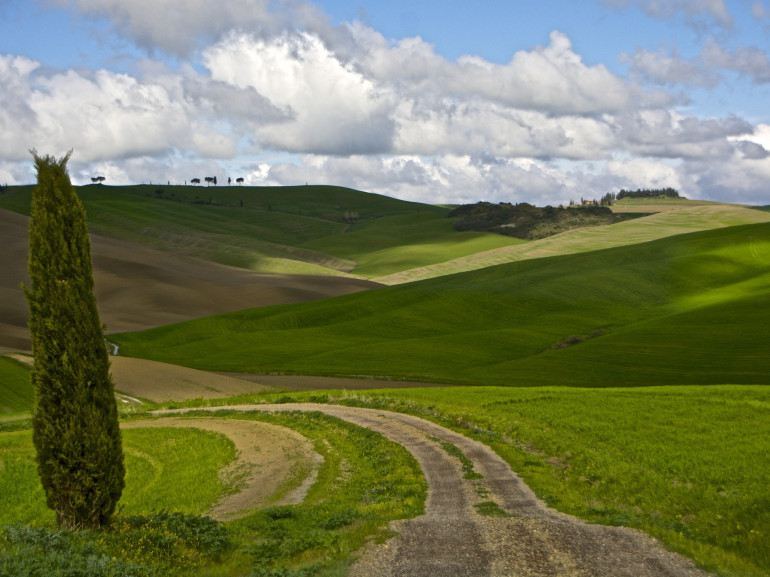
San Quirico d'Orcia is halfway between two famous villages of Val d'Orcia: Pienza and Montalcino.
San Quirico was an important stage in the middle age long the Via Francigena, where pilgrims - traveling to the Eternal City - could find reception points.
The ancient village of San Quirico is shown still in its original medieval structure and is located within a wall marked by four gates to the city.
But who was San Quirico? According to Christian tradition was the child, with his mother Julitta, died a martyr at the time of the 'Emperor Diocletian in 304 approximately.
We suggest you to enter in San Quirico by the north-west door, to see immediately the facade of the Collegiate Church of San Quirico and Giuditta, a beautiful Romanesque church with Gothic and Baroque elements, characterized by beautiful sculptures of lions.
We continue our journey on foot along Via Dante Alighieri, until you get into the heart of the small village, in the Piazza della Libertà square. Here you can visit the Church of San Francesco, and see the sculpture of the Virgin by Andrea della Robbia.
Let's continue our trip along the road, taking a quick look at the many shops, bars and restaurants. It 'a good opportunity to buy some pecorino cheese of Pienza, to taste during our long walking journey to Radicofani.
We leave the village of San Quirico and start to climb towards the village of Vignoni. The landscape is dominated by the massif of Mount Amiata. The fortress of Radicofani, the ultimate goal of our journey, appears in the background.
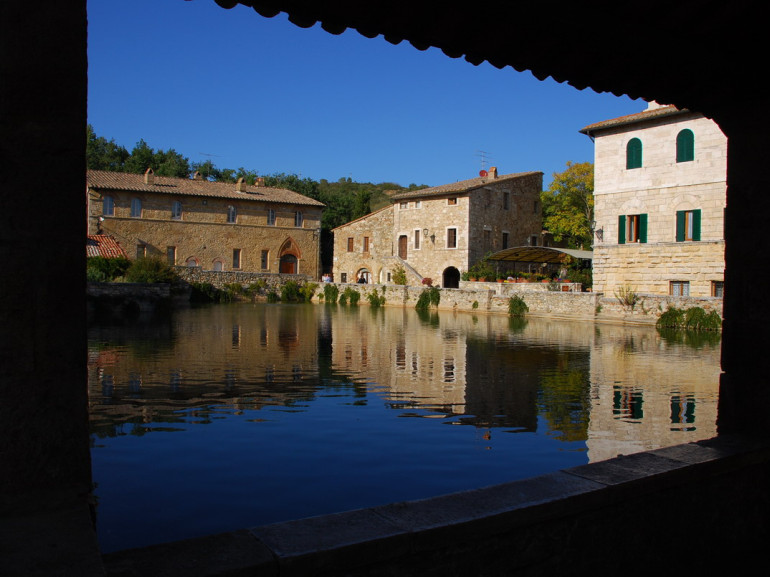
Discovering the natural free spa of Bagno Vignoni
The first interesting stop along the way is definitely Bagno Vignoni, about 5 kilometers from San Quirico d'Orcia. We get there after passing the village of Vignoni, and come a descent of about 200 meters in altitude.
The unique feature of Bagno Vignoni is the enormous pool of thermal water located in the Square of the sources. Inside the large pool gushes hot thermal volcanic.

The same beneficial hot water flowing through a maze of canals where you can soak your feet for free.

If you want to immerse yourself in the fumes of the hot water you should follow the road, partly dirt road, until you reach a paradise free spa.
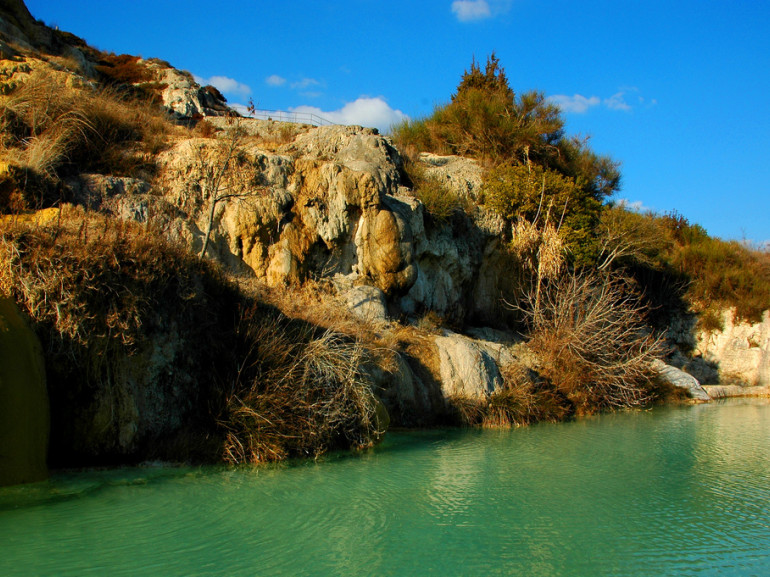
The hot water and blue collects in natural pools formed by rocks as white as snow and surrounded by natural vegetation. Here you can immerse yourself for free in the warm waters and enjoy a break of relaxation, before facing the hardest part of the journey on foot.
We leave Bagno Vignoni and downhill we cross the Orcia river and Via Cassia. We walk along the main road for a while, then we go back in the direction of Castiglione d'Orcia.
The route of the Via Francigena does not arrive in the village if Castiglione d'Orcia, but you can visit the village with a deviation of 4 km.
After the ascent, the route continues with a descent that arrives to the ruins of the Hospital of Briccole, which in medieval times was a stopping point for travelers along the Via Francigena. Here do not miss the small church of San Pellegrino.
Arrived to the Hospital of Briccole we enjoy the special peace that reigns in this place. We are in the geometric center of the Val d'Orcia, surrounded by nature, and the feeling is that they have found an real oasis.
Our path goes on along the disused track of Cassia, and down to the main road.
We still have about 5 km walk, with a vertical drop of 400 meters, after which we are already at the edge of Radicofani, with its magnificent fortress that controlled for centuries the border between the Grand Duchy of Tuscany and the Papal State.
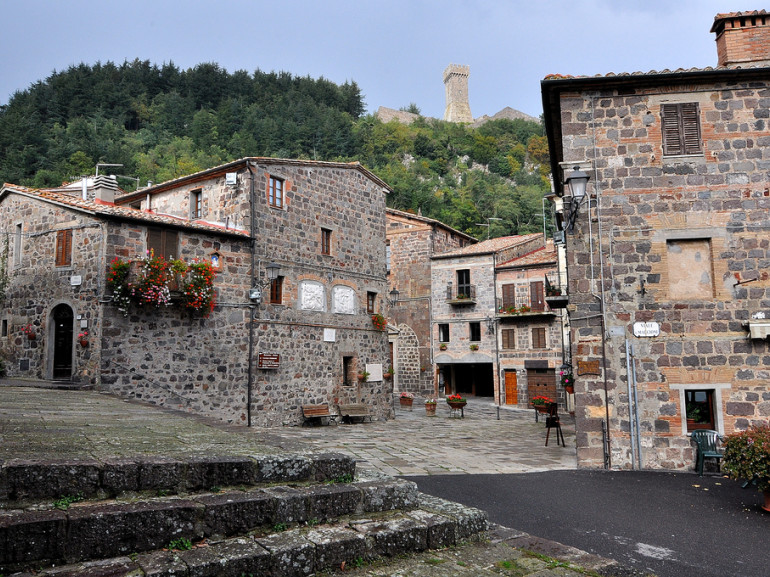
Discovering Radicofani
Going up along the main street we reach the historic center of Radicofani, which offers a beautiful view over the Val d'Orcia, Amiata and the Apennines, Lake Trasimeno and Lake Bolsena.
What to see in Radicofani? Surely the church of San Pietro, the Praetorian Palace and the Church of St. Agatha.
Do not miss the remains well preserved of the ancient fortress, with the keep and the two fortifications fully visited.
Because of its strategic position on the ancient Via Francigena, the Fortress of Radicofani was used by Pope Adrian IV to stem the advance of Frederick I Barbarossa who ruled Tuscany from center south of Castle Montegrossi. Visiting the fortress there is a perception of military and economic power that this territory had in the past.
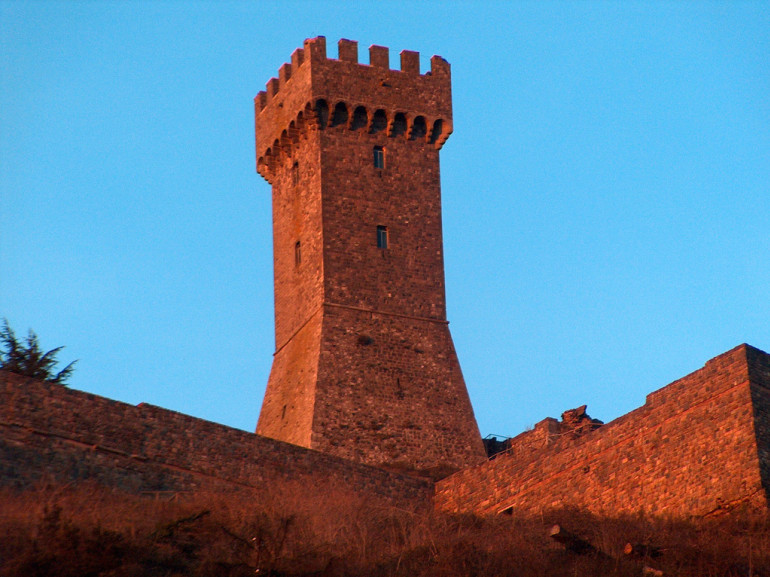
From the Fortress, the view is great, you can see Monte Amiata, Val d'Orcia and Trasimeno lake. The entrance ticket to the Rock is 4 euro.
Cover Image: Bagno Vignoni, Tuscany, ph. by Andrea Donati, via flickr
Author: Silvia Ombellini
